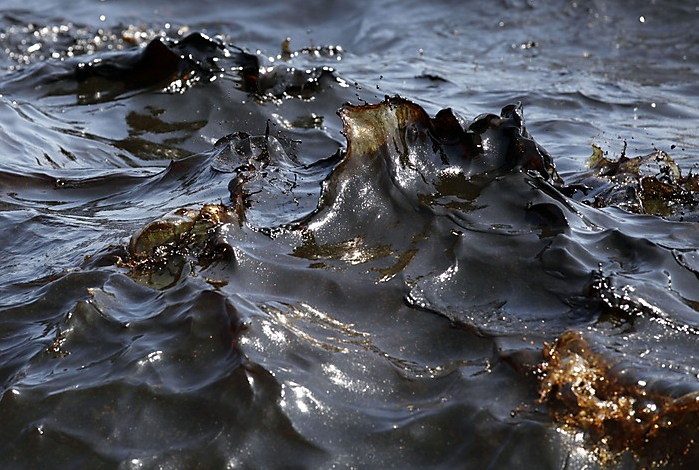Engineers stymied on how to stop surging Gulf of Mexico oil spill
By Jennifer Lebovich, Michael Newsome and Laura Isensee
McClatchy Newspapers BILOXI, Miss. — Nineteen days after oil started spewing into the Gulf of Mexico, experts appeared Sunday to have no certain plan for sealing anytime soon a runaway well 5,000 feet below the gulf’s surface. What had been thought to be the best immediate solution to contain the leak, a 78-ton steel and concrete box known as a cofferdam that took two weeks to build, rested useless on the seafloor, and the gulf’s fragile ecosystem seemed to be facing if not the worst case scenario, then one that was certainly very bad — an outpouring of oil that will go on for perhaps three more months before a relief well can intercept the leaking one and seal it. A top Coast Guard official suggested that experts might try to cork one of the two existing leaks by stuffing shredded tires, golf balls and other debris into the well’s failed blowout preventer. But it was uncertain how seriously that option was being considered; executives of BP, the leaking well’s owner, said earlier in the week that such a move could make things worse by damaging whatever part of the blowout preventer was still working. For now, making the cofferdam work is the priority, said Mark Proegler, a BP spokesman at a command center in Robert, La. “I have every confidence we’ll find a good temporary solution,” Proegler said, while acknowledging that he could not give a time frame for when another solution could be in place. “We certainly have every hope and prayer that we find a solution as soon as possible to mitigate the oil flow.” … In Mobile Bay, authorities were constructing a “containment gate made with a deep water boom” to help protect the water there, Allen said. It was Allen who raised the possibility of using shredded tires and golf balls and other debris to help plug the gusher. He called the strategy a “junk shot,” designed to plug the blowout preventer — the safety mechanism that should have sealed off the well after the April 20 explosion. “They’re actually going to take a bunch of debris, shredded up tires, golf balls and things like that and under very high pressure shoot it into the preventer itself and see if they can clog it up and stop the leak,” Allen said. “I think I hear an experiment,” said Robert Bea, an engineering professor at the University of California at Berkeley and oil pipeline expert who spent 18 years with Shell Oil. “They are pulling every trick known to bring this thing under control.” …
Engineers stymied on how to stop surging Gulf of Mexico oil spill
